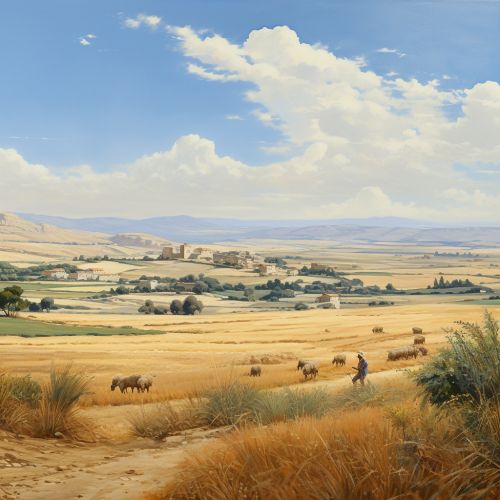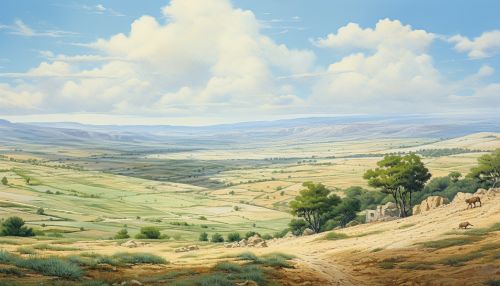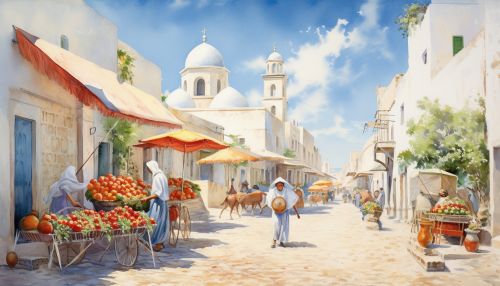Tunisia
Geography
Tunisia, officially known as the Republic of Tunisia, is a country in North Africa that borders the Mediterranean Sea to the north and east, Libya to the southeast, and Algeria to the west and southwest. The country covers an area of 163,610 square kilometers, making it the smallest nation in North Africa.


Climate
Tunisia has a diverse climate, with a Mediterranean climate in the north, characterized by mild, rainy winters and hot, dry summers. The southern part of the country transitions into a desert climate as part of the Sahara Desert, where rainfall is scarce, and temperatures can be extreme.
Biodiversity
Despite its small size, Tunisia is home to a rich array of flora and fauna. The country's diverse ecosystems, from coastal lagoons and forests to desert and mountainous regions, provide habitats for a variety of species. Some of the notable wildlife species include the Barbary stag, Atlas deer, and the endangered Mediterranean monk seal.
History
Tunisia's history dates back to ancient times, with the region being home to several ancient civilizations, including the Phoenicians, Romans, and Berbers. The country's strategic location on the Mediterranean Sea made it a coveted territory for various empires.
Ancient History
The earliest known inhabitants of Tunisia were the Berbers, an ethnic group indigenous to North Africa. The Phoenicians, a seafaring people from the eastern Mediterranean, established the city of Carthage in the 9th century BC, which grew into a major power in the region.
Medieval and Ottoman Period
Following the fall of the Western Roman Empire, Tunisia was invaded by various Arab and Berber dynasties, which introduced Islam to the region. In the 16th century, Tunisia became a part of the Ottoman Empire, under which it enjoyed a degree of autonomy.
French Colonization and Independence
Tunisia became a French protectorate in 1881, marking the start of a period of European colonization. The country gained independence from France in 1956, led by the nationalist leader Habib Bourguiba, who became the country's first President.
Politics
Tunisia is a semi-presidential representative democratic republic, with a President serving as the head of state and a Prime Minister as the head of government. The country is known for its progressive constitution, which guarantees fundamental rights and freedoms.
Government Structure
The government of Tunisia is divided into three branches: the executive, legislative, and judicial. The executive branch is headed by the President and the Prime Minister, while the legislative power is vested in the Assembly of the Representatives of the People. The judicial branch is independent of the executive and the legislature.
Foreign Relations
Tunisia maintains diplomatic relations with many countries and is a member of several international organizations, including the United Nations, the African Union, and the Arab League.
Economy
Tunisia has a diverse economy, with sectors ranging from agriculture, mining, and manufacturing to tourism and services. The country is one of the largest exporters of phosphate in the world and also has significant reserves of oil and gas.


Agriculture
Agriculture plays a vital role in Tunisia's economy, employing a significant portion of the population. The country is a major producer of olives and olive oil, and other important crops include wheat, barley, dates, and citrus fruits.
Industry and Services
The industrial sector in Tunisia is diverse, with key industries including textiles, automotive parts, and electrical equipment. The services sector, particularly tourism, is a significant contributor to the country's GDP, with Tunisia being a popular destination for its rich history, culture, and Mediterranean beaches.
Culture
Tunisian culture is a blend of indigenous Berber, Arab, African, and European influences. This rich cultural heritage is reflected in the country's music, cuisine, literature, and arts.
Music and Dance
Tunisian music is diverse, with traditional genres like Malouf, a kind of classical music inherited from the Andalusian music tradition, and modern styles like Tunisian hip hop. Traditional Tunisian dance includes the 'Rahaba', a folk dance performed during celebrations.
Cuisine
Tunisian cuisine is a blend of Mediterranean and desert dwellers' culinary traditions. It features a variety of ingredients, including olive oil, spices, tomatoes, seafood, and meat, with couscous being a staple food.
Literature and Arts
Tunisian literature has a rich history, with works written in Arabic and French. The country's visual arts scene is vibrant, with traditional arts like pottery and weaving, as well as modern art forms.
